OPENING HOURS : MON - SAT 9AM - 7PM
OPENING HOURS : MON - SAT 9AM - 7PM

BALANCE AS A DYNAMIC NATURE OF EFFICIENT MOVEMENT
The traditional understanding of balance as maintaining the centre of mass between the fulcrums (where the centre of mass, as an imaginary point, has its place inside the body) reflects the static understanding of this term.
In sports, the quick pace of performing the movement, the intensity of the workout, as well as athlete’s agility and mobility and the action mulitidirectionality, demand balance to be considered as a dynamic “structure”. In all of these sports, the centre of mass has its place outside the body and the athlete, being constantly put to the test, has to maintain their balance at all times. Creation of such unstable training conditions combined with an appropriate exercise program leads to improvement of many parameters that make athlete’s competetive efforts more effective.
During balance training, the organism of an athlete performs a great deal of senso-motoric work. The human body is full of neurosensory cells („detectors”, „minibrains”) which are located not only in muscles but also in tendons, ligaments etc. These sensors remain dormant until they have to make some kind of effort, as it is in the case of balance training. Untrained sensors work in a slower and less precise way than the sensors that do undergo training.
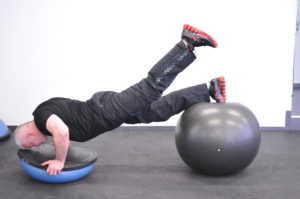
Balance is an ability that can, to a great extent, be developed.
Balance training enables to activate the nervous and the muscle system in order for moves to be carried out in a faster, more precise and more effective way.
BALANCE EXERCISES AS A FORM OF STRENGTH TRAINING
Balance training is a variant of strength training that is realised under conditions of disturbed balance and on unstable surfaces. Balance exercises stabilize the work of joints through elimination of weak kinetic chain links. In many situations that occur during sparring, effectiveness isn’t simply the outcome of applying maximal force. In most cases, the essential element is strong, force-generating muscle contraction which, at the same time, also has to be supported by stabilizing efforts of other muscles. Some of the muscles should also remain relaxed during this contraction.
Through balance training in which muscle contractions occur without conscious involvement of athlete’s will, the training immediately enters the phase of movement ‘automation’ which is characterized by spontaneous muscle and nervous system reactions.
BALANCE EXERCISES AS A FORM OF SPEED TRAINING
Developing the ability to maintain balance and to regain a stable position in a fast and natural way after losing it contributes to shortening the time needed to go from one movement sequence to another. Complex and opposing moves can be performed faster at that time, as the time between a concentric and an eccentric muscle contraction is considerably reduced.

BALANCE EXERCISES AS A FORM OF QUICKNESS TRAINING
Quickness is connected to speed training, however, it specifically concerns immediate, explosive taking of action in which dynamic moves of limbs play a key role. Quickness training is therefore not identical to shortening reaction time.
In martial arts, hockey, football and other direct competeive sports the control of balance has fundamental meaning. This applies especially to sports in which the body weight rests on one leg when performing an action or those in which the action itself means taking the opponent down or ground fighting or pushing off the play, etc characterized by simultaneous movement direction changes or fast and deep rotational movements of torso and of the whole body. A well-trained balance allows faster movement direction changes, makes proper execution of action easier and adds flow, as well as agility.
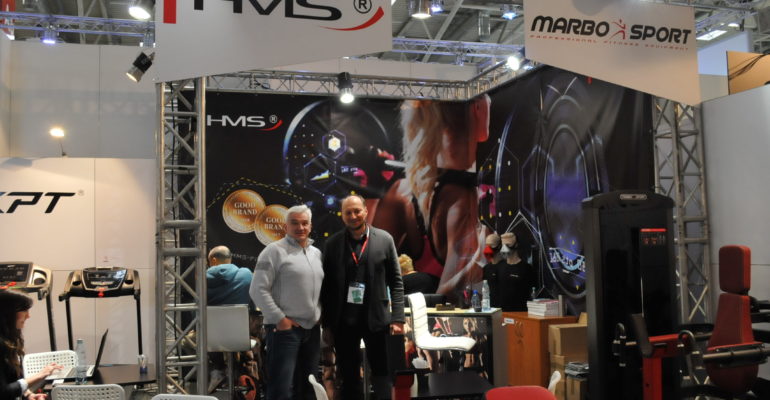
ISPO fair is the biggest sport exhibition in Europe. Numbers speak for themselves – over 2700 exibitors and more than 86,000 visitors make this event great. My interest was HEALTH&FITNESS department – with sport and training equipment and gear. I have spent some time on HMS/Abisal boot which delivers functional training equipment to our training programs and brings goods to our selling offer. I was also walking through the whole exibition area to explore and interact with people and their products.
There are two new trends which became to be more advanced but also more presend and accesible to the public, however the nature of those product are both – very specialised and sophisticated.
PERFORMANCE TEST EQUIPMENT – new technology became light, portable and small. You just stick a small sensor to your leg and wireless software will register your speed, acceleration, deceleration, direction changes, average speed, total number of distance. Sensors are provided together with software which you can download on your computer or even an App on your phone. It became more accesible to teams and individual users.
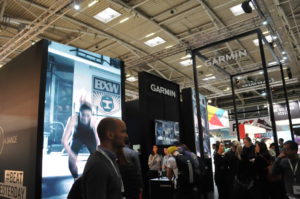
PERSONALIZED GEAR – new trend allows to scan your feet, to scan your body and make completely individual shoes or to get woven shirt. Highly advanced technology allowes to produce customized gear in 30 minutes.
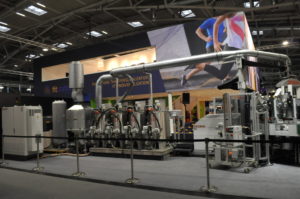

Only two days left to the opening the biggest Sports Fair in Munich. I will join HMS/Abisal Stand 419 at Hall A6. See you there!
https://www.ispo.com/en/munich?bid=ISP_2018_V_EML_05_EN&etcc_med=email&bkn=central_email
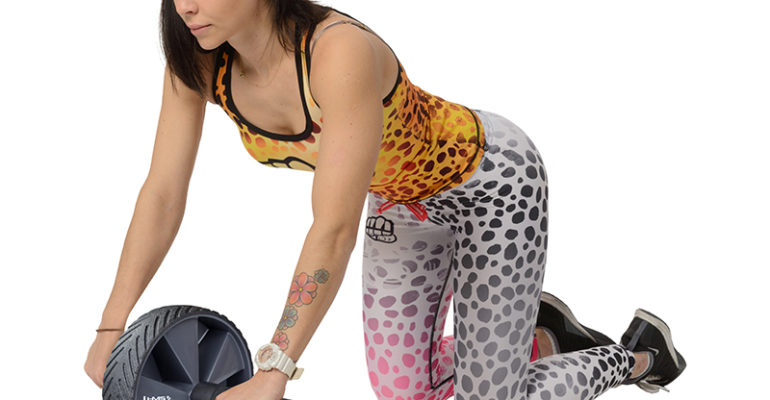
The aim of the warm-up is to prepare the whole body for an intensive workout. Sport disciplines like football, ice hockey, basketball, martial arts, etc. are characterized by high-intensity, multi-dimensional moves with sudden changes of pace, with action speeding, slowing and often changing its direction. Therefore, the warm-up exercises also have to performed dynamically, so that they match the movements that appear in sport discipline. Moreover, effectiveness of a warm-up also depends on series of active rest phases, properly intertwined into the warm-up. Optimal warm-up time is 5 to 12 minutes.
RULES OF DYNAMIC SPORT WARM-UP

The synchronous flexion of the knee joint and the hip joint and their consequent extension is the most effective exercise that develops lower limbs strength (especially of the quadriceps femoris muscle). In training terminology, this exercise is called a squat and all of its variants do improve leg strength.
In every sport lunge plays a key role, namely, the forward lunge. While the energy transfer in squats occurs vertically with a parallel distribution of forces (the body weight and potential additional weights) and the movement structure itself cannot be transposed onto activeness in fight, the lunge entails energy shifts in various directions (generally in the horizontal plane) and the physical loading of the lead leg.
Furthermore, the forward lunge has many variants and applications which depending on the aim of the training can act as strength, coordination, explosive, speed or flexibility exercises.
Main assets of lunge:
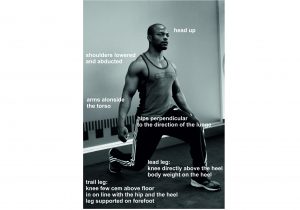
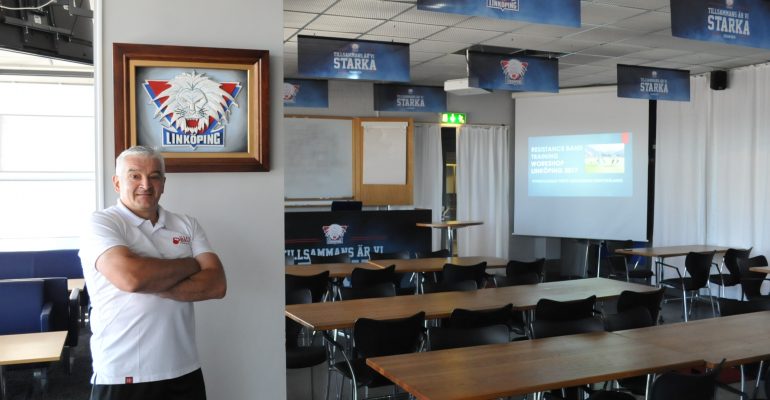
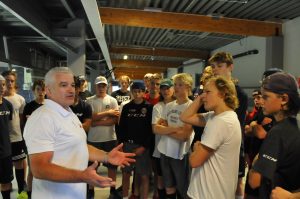 There is unique vibe of calm strength, pride and certaininty in Linköping. HC Linköping. Lion on the club logo reflects it very well. Excellent hockey facility is the first thing I have registered. Then I have met people – trainers, coaches, managers, facility workers and others. The way they communicate with themselves and the others gives impression that they are driving the same bus which leads to understanding and urgent efficient action. This place is full of passion and energy. It is special. It is leading place in Europe and arguably one of the few in the World for young hockey players development. Every year they have young players who are listed on NHL Draft. It was a pleasure and honor to be there and present some exercises and methods for off-ice conditioning. I am taking my pride to be (probably) the first coach from Switzerland/Poland to teach Swedish hockey players.
There is unique vibe of calm strength, pride and certaininty in Linköping. HC Linköping. Lion on the club logo reflects it very well. Excellent hockey facility is the first thing I have registered. Then I have met people – trainers, coaches, managers, facility workers and others. The way they communicate with themselves and the others gives impression that they are driving the same bus which leads to understanding and urgent efficient action. This place is full of passion and energy. It is special. It is leading place in Europe and arguably one of the few in the World for young hockey players development. Every year they have young players who are listed on NHL Draft. It was a pleasure and honor to be there and present some exercises and methods for off-ice conditioning. I am taking my pride to be (probably) the first coach from Switzerland/Poland to teach Swedish hockey players.
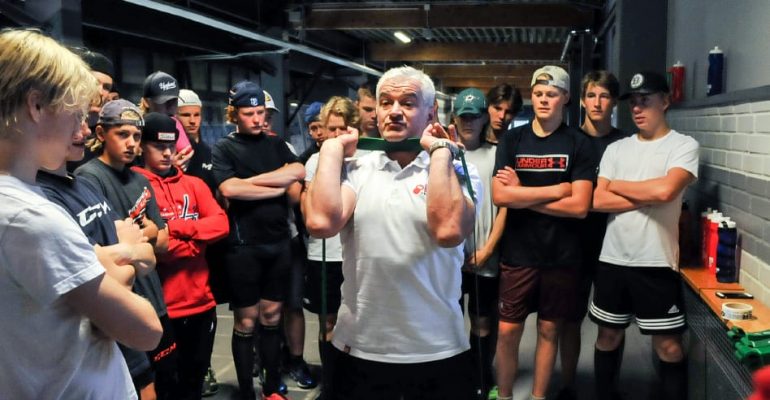
Functional training is a process in which physical exercises that form movement patterns (i.e. movements that engage the whole body and imitate sport activity) are used in a deliberate and planned way. Athletic functional training is orientated towards the aim, productivity and results. It is an intended turn from exercises involving only one joint to workout in which whole muscle groups are engaged and which requires integrated, multi-joint moves that occur in kinetic chains.
Copyright © 2019 Macsperform. All rights reserved.